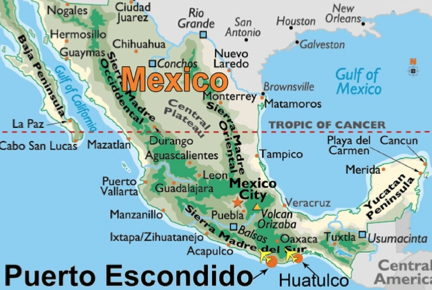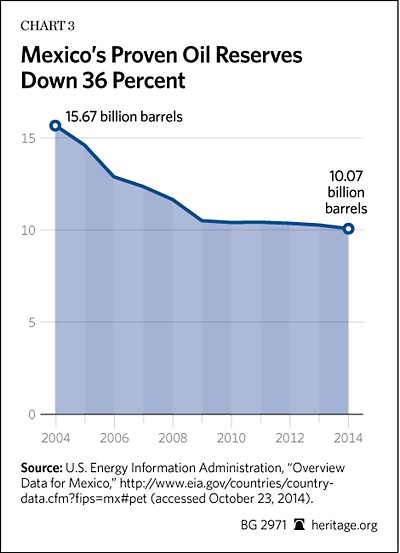A Guide to Investing in Mexico
Post on: 6 Апрель, 2015 No Comment

Investing in the Neighbor to the South
You can opt-out at any time.
Mexico is a well-known country to anyone in the U.S. due to its proximity, but many investors fail to appreciate its economy. Between 1995 and 2002, the country’s economy grew by an average of 5.1% per year, which is significantly stronger than many developed countries. In this article, we’ll take a look at Mexico’s economy and various ways to invest in it.
Mexico’s Growing Economy
Mexico’s neighbor to the north may be the focus of most investors, but the country’s economy is actually the 11th largest in the world by purchasing power parity (PPP). Given this proximity to the United States, the country tends to react more to U.S. events than those of Latin American countries south of its borders, creating an interesting dynamic for international investors.
Compared to most developed countries, Mexico’s economy is heavily export-based with 32.6% of its gross domestic product (GDP) from industry and 63.5% from services, as of 2010. Meanwhile, the OEDC and the WTO both rank Mexican workers as the hardest working in the world in terms of annual hours worked and profitability per man-hour.
The economy is also making strides when it comes to increased private ownership and favorable business regulation. Congress recently approved favorable tax, pension and judicial reforms, while the country’s oil industry may soon see more privatization. However, monopolies, widespread poverty and government corruption remain key problems that need to be solved.
Investing in Mexico with ETFs & ADRs
The easiest way to invest in Mexico is with exchange-traded funds (ETFs) that hold a diverse portfolio of securities and trade on a U.S. stock exchange. With a net asset value of over $1.5 billion, the iShares MSCI Mexico Investable Market Index Fund (NYSE: EWW) is the most popular ETF in the U.S. holding over 40 different Mexican securities in its portfolio.
ProShares also provides ultra long and ultra short ETFs with more leverage, but significantly less liquidity than the iShares MSCI Mexico ETF. The ProShares Ultra MSCI Mexico Investable Market ETF (NYSE: UMX) provides double the daily performance of the MSCI Mexico index, while the ProShares UltraShort MSCI Mexico Investment Market ETF (NYSE: SMK) does the opposite.
Investors looking for more direct exposure may also want to consider American Depository Receipts (ADRs), which are U.S. traded securities that track foreign stocks. Since these trade on U.S. exchanges, investors do not need to deal with foreign brokerage accounts, but they still may need to consider foreign taxes and relatively low liquidity in some cases.
Some popular Mexican ADRs include:
- Cemex SAB de CV (NYSE: CX)
- America Movil SAB de CV (NASDAQ: AMOV)
- Fomento Economico Mexicano SAB (NYSE: FMX)

Benefits & Risks of Investing
Many U.S. citizens know Mexico for its violent drug gangs in the northern states, but the country has grown over the years to become a significant global player.
Some benefits of investing in Mexico include:
- Export-Driven Economy. Mexico is an export-driven economy that benefits from stronger global demand. For instance, its automotive industry is internationally recognized with the big three operating in the country since the 1930s.
- Significant Growth Potential. Mexico is a nation with enormous growth potential and is included in numerous emerging market indices. For instance, Goldman Sachs’ MIST economies include Mexico, Indonesia, South Korea and Turkey.
Some risks of investing in Mexico include:
- Widespread Petty Corruption. It’s estimated that petty corruption by government officials adds about 10% to the cost of consumer goods and services, with widespread bribing of officials to obtain things like construction permits.
- Significant Organized Crime. Since 2006, Mexico has been in the midst of a drug war that has caused some 60,000 deaths. The problems don’t necessary affect export businesses directly, but could lead to geopolitical instability.
Key Takeaway Points
- Mexico is a familiar country to many people in the U.S. but investors don’t seem to appreciate its economy’s potential to its full extent.
- Mexico’s economy is primarily export-based with a hard working labor force, but faces problems with crime, corruption, poverty and monopolies.
- The easiest way to invest in Mexico is through ETFs and ADRs, with the most popular option being the iShares MSCI Mexico Investable Market Index Fund (NYSE: EWW).














